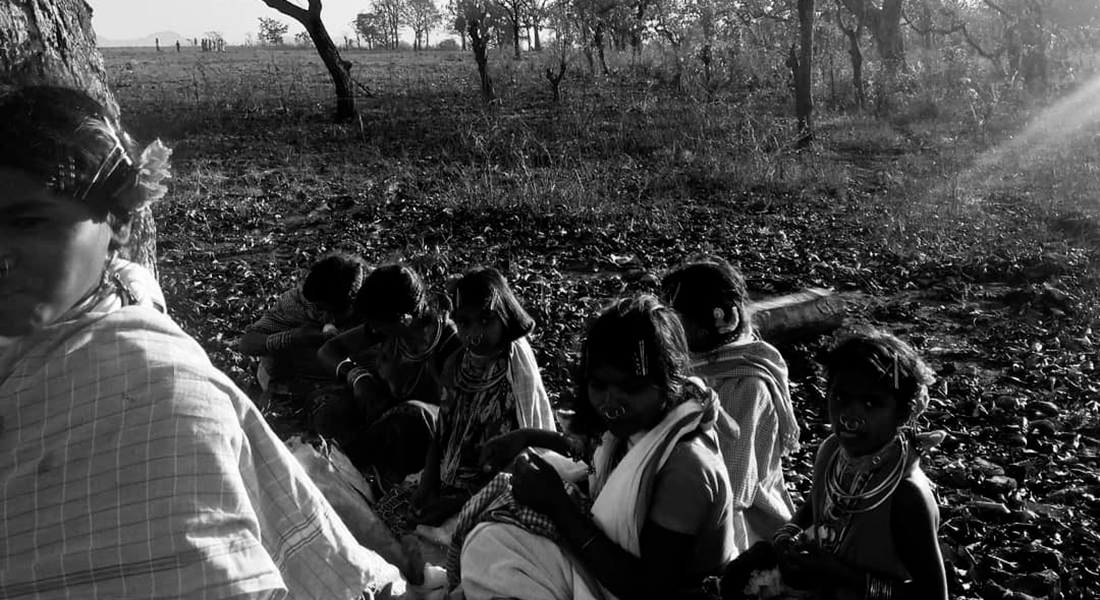Deregulation Of Environmental Law and Rising Authoritarianism in India
This is an edited extract of Governing Forests: State, Law and Citizenship in India’s Forests by Arpitha Kodiveri, an environmental law and justice scholar, published by Melbourne University Press.
By Arpitha Kodiveri

India is currently reeling under a heatwave as the elections are underway. Elections mark a salient time for choosing the future of India’s democracy. In this blog post, I argue that the current and previous political regimes have deployed authoritarian tactics to dilute environmental laws. I chronicle how environmental laws in India have been diluted over the years because of the transformation to India’s economy and politics. The blog is an extract from my forthcoming book Governing Forests: State, Law and Citizenship in India’s Forests, which speaks to the challenges of conservation and dispossession of forest-dwelling communities in India. Data is derived from fieldwork undertaken for my doctoral research between 2018-2020 in the eastern Indian state of Odisha.
Environmental law has been a subject of deregulation ever since India’s economy liberalized in 1991. A significant attempt to re-engineer environmental law was made in 2002 with the Govindarajan committee report which sought to simplify the environmental and forest clearances. The report identifies the problem as:
Environmental clearance perhaps takes the longest time and causes maximum delays to projects. Cumbersome procedures for environmental clearance and public hearing, submission of incomplete information, poor quality of EIA/EMP, disproportionate details required with applications, delays in the meetings of the Expert Committees and site visits, etc., are the major reasons behind delays (1).
These suggested reforms and changes did not take on board the views of concerned stakeholders and citizens.

The silencing of citizen voices in environmental law is not new. The Modi government has adopted an authoritarian form of law-making with reduced parliamentary deliberation as well as citizen participation (2). The changes in environmental law in such a context have meant rapid deregulation and the shaving away of hard-won legal gains, especially of procedural democracy. From this vantage point, environmental law has become a site of assertive state control to facilitate capital and not regulate it. The vibrant environmental movement which has been active in opposing these autocratic amendments has coordinated a campaign that opposed the passing of the draft EIA 2020. Citizen participation like the previous wave of environmental law reform happens outside through citizen-led movements for participation in environmental law-making. This goes back to the understanding of environmental law being malleable and expandable as it continues to be a site of contestation. The Ministry of Environment, Forest, and Climate Change received up to 17 lakh letters opposing the amendments to the EIA (3).
Modality of Deregulation in the Modi Government
The legal principles of quick decision-making to cultivate a regulatory environment that facilitates capital creates two modalities of deregulation that I have come to identify. They are:
- A The use of delegated legislation: The amendments made and proposed are passed through delegated legislation so that they do not have to go through parliamentary scrutiny. The Ministry of Environment and Forests under the EPA,1986 retains powers to pass such delegated legislation and use it as a mechanism to change the law.
- The creation of legal exceptions or reducing the scope and applicability of the Act: Using delegated legislation and amendments to key laws, the state seeks to reduce the applicability of protective legislation like the Environment Protection Act,1986 and the Forest Conservation Act,1980.
- Emphasis on a compensatory approach to environmental law: The development of compensatory mechanisms like the compensatory afforestation act provides a legal approach where ecological damage can be compensated for and restored. This draws from the civil law legal theory of compensating for harm done and has informed environmental law deregulation where it is permissive of capital with the conditionality of compensation as opposed to preventing the harm.
The use of delegated legislation allows for quick lawmaking which is not subject to sufficient scrutiny in favour of capital. Similarly, the creation of exceptions ensures that industries like the mining sector are protected from the regulatory burden that comes with the environment and forest clearances. The desire for fast-tracking these clearances places undue pressure on the bureaucracy and local communities in arriving at a decision (4).

In October 2021 the Ministry of Environment, Forest, and Climate Change issued a consultation paper detailing out fourteen proposed areas for amending the Forest Conservation Act it included creating a large swathe of exceptions to the applicability of the Act. Including land required for strategic projects, land alongside railway lines, and de-reserving forests without central approval (5). These changes were made to liberalize forest laws to facilitate development. The element of public participation was partially fulfilled when the consultation paper was released for public comment but within a short window of fifteen days. It was made available in a single language while these changes will impact a diverse community who live and depend on these forest areas. Public consultation in environmental lawmaking has not been consistently implemented. When environmental law is being deregulated citizen participation has been avoided or conducted in an ad-hoc manner (6).
Environmental clearances and forest clearances have been subject to criticism by business interests due to the time it takes to be able to obtain one. There have been several attempts to reframe or as Kanchi Kohli and Manju Menon identify as re-engineering environmental law to suit capital since the liberalization of India’s economy in 1991 (7). These changes to environmental laws have been driven by high-level committees who have been set up to examine the state of play of environmental law and reform it in the direction of simplification and streamlining the processes (8). A significant attempt to re-engineer environmental law was made in 2002 with the Govindarajan committee report where it sought to simplify the environmental and forest clearances. The report identifies the problem as:
Environmental clearance perhaps takes the longest time and causes maximum delays to projects. Cumbersome procedures for environmental clearance and public hearing, submission of incomplete information, poor quality of EIA/EMP, disproportionate details required with applications, delays in the meetings of the Expert Committees and site visits, etc., are the major reasons behind delays (9).

In my interviews with senior officials in the Department of Mines in Odisha, it was evident that the common criticism about environmental laws was the cumbersome regulatory burdens (10). The legal theory of excessive proceduralism and procedural democracy to be cautious is viewed as cumbersome by economic actors. The emphasis of deregulation has been one of speed the need to be able to deliver these decisions in a timely fashion. This is a theme that can be observed in the deregulation efforts underway since 2014.
As the Modi government came into power in 2014, it promised development and unbridled reform (11). The first step in the direction of the deregulation of environmental law was the setting up of the high-level committee under the chairmanship of TSR Subramanian to overhaul five key environmental legislation. The most problematic aspect of the proposed amendments under this high-level committee was to rely as Kohli and Menon articulate “based on “utmost good faith” and severe penalties for breach by project developers” (12). This brings us back to Chhatrapati Singh’s question of will a legal theory of penalties be able to combat environmental issues (13).
Since 2014, the changes in environmental law are driven by the need for the ease of doing business—and has arguably disproportionately impacted fragile tribal (14). This has meant the need to create single-window clearances and dilute the existing enviro-legal framework. The single-window clearance can be described as a legal mechanism to shut the many windows available for local communities to articulate their dissent as well as authorities to scrutinize the projects (15). It aims to collapse the multiple and specific questions that each clearance tackles like the environment, forest, and wildlife clearance into one for simplifying it. This reduces deliberative opportunities available to citizens as well as specialized regulatory oversight on these development projects.
Reference list
(1) For more about the Govindarajan Committee Report for Investment Reforms, see: http://www.indiaenvironmentportal.org.in/files/Policy%20Regimes%20on%20Environment.pdf.
(2) Khaitan, Tarunabh, Killing A Constitution With A Thousand Cuts: Executive Aggrandizement And Party-State Fusion In India (April 6, 2019). Law And Ethics Of Human Rights (Forthcoming), Available At SSRN: Https://Ssrn.Com/Abstract=3367266 Or Http://Dx.Doi.Org/10.2139/Ssrn.3367266
(3) Interview With Disha Ravi and Yash Marwah by Arpitha Kodiveri (December 27, 2021).
(4) Arpitha Kodiveri,’ The Visible Faultline Of Development In India’ In Alan.P.Diduck, Kirit Patel And Aruna Malik (Eds) Advancing Environmental Justice For Marginalized Communities In India (Routledge, 2021).
(5) Kanchi Kohli And Manju Menon, Developments In Environmental Law In India (Cambridge University Press,2021) Pp 319-334.
(6) Ibid.
(7) Kanchi Kohli and Manju Menon, Developments in Environmental Law in India (Cambridge University Press,2021) pp 319-334.
(8) Kanchi Kohli and Manju Menon, Developments in Environmental Law in India (Cambridge University Press,2021) pp 319-334.
(9) Govindarajan Committee Report for Investment Reforms available at https://dpiit.gov.in/sites/default/files/implrepo2.pdf
(10) Interview by Arpitha Kodiveri in Bhubaneshwar, July, 2018.
(11) Kanchi Kohli and Manju Menon, Developments in Environmental Law in India (Cambridge University Press, 2021) pp 319-334.
(12) Ibid.
(13) Chhtrapati Singh,’ Legal Policy for the Control of Environmental Pollution’ Cochin University Law Review, Volume VIII 1984 pp 1-27.
(14) Christopher, Stephen, Matthew Shutzer and Raile Rocky Ziipao. 2023. “An Introduction to Tribal Ecologies in Modern India.” Journal of the Tribal Intellectual Collective India 7(1): 1–18.
(15) Akshay Deshmane,’ The draft forest law can end up spurring deforestation’ in The Morning Context (6 October 2021).
